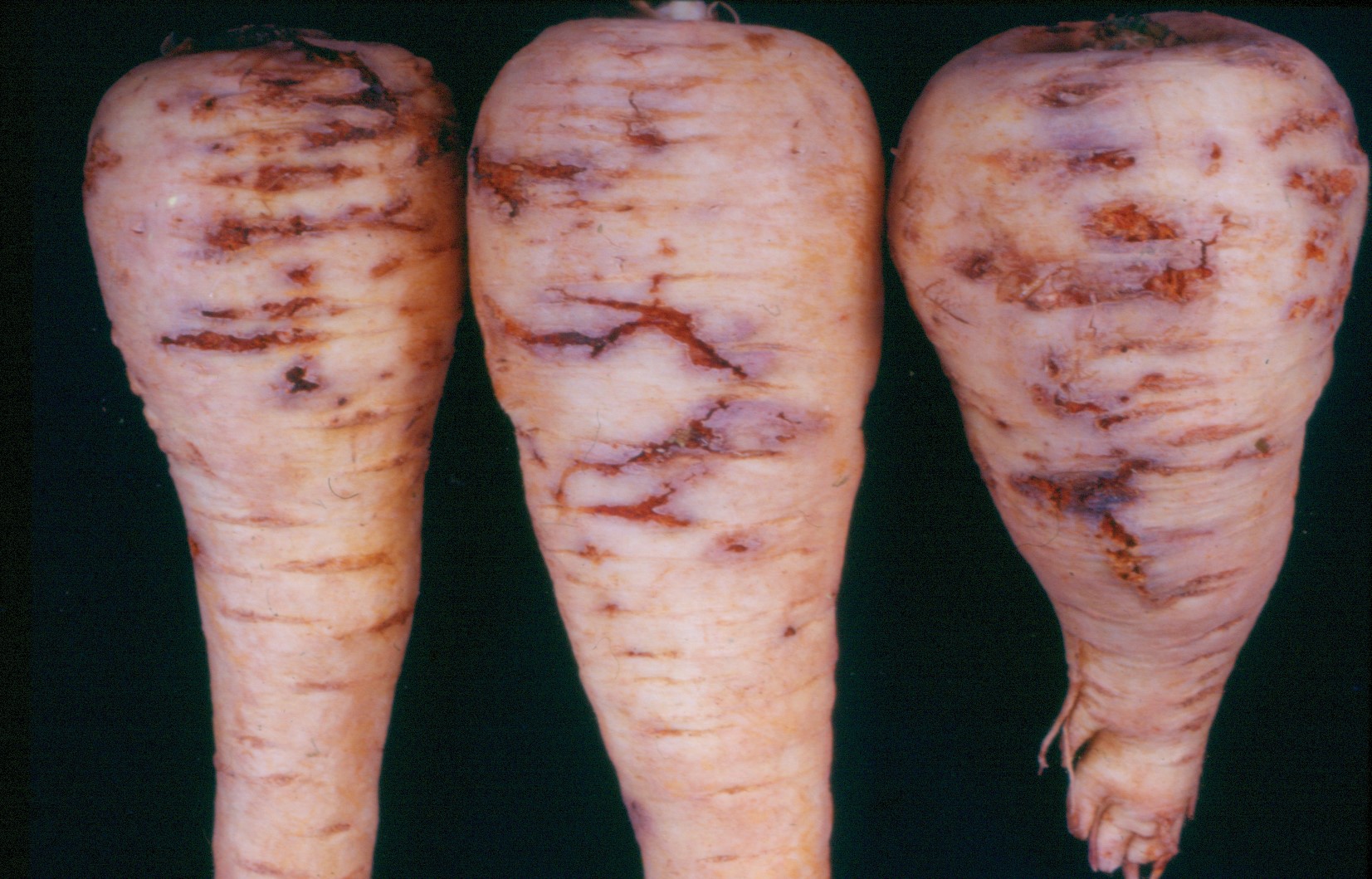Please click here to access the main AHDB website and other sectors.
- Home
- Pest insects in carrot and Apiaceous crops: carrot fly
Pest insects in carrot and Apiaceous crops: carrot fly
The carrot fly is a pest of carrot, parsnip, celery, celeriac and parsley. Find out about its life cycle and the damage this pest insect can cause.
Back to: Pest insects in carrot and Apiaceous crops
Life cycle
First-generation adult carrot flies emerge from pupae from late April through to early June – the timing will depend on temperatures in the spring. Newly emerged carrot flies feed and mate. Several days later, they lay their eggs in the soil close to the base of a carrot plant.
The newly hatched larvae move through the soil to the root system. At first, the larvae feed on the lateral roots, but then they tunnel into the taproot. When fully grown, the larvae pupate, and the second generation of flies emerge from these pupae in mid-July/August and lay eggs.
Depending on weather conditions, the eggs laid at the beginning of the second generation may develop into the third generation of adults, emerging in early autumn.
Most second-generation eggs do not reach the adult stage, however. Some reach the pupal stage by the start of winter, while the remainder continues to feed on overwintered carrots until they form pupae in the spring.
Damage
If carrot fly larvae attack carrot seedlings, they are likely to kill them. Once the taproot has started to develop, they cause damage by tunnelling into it to feed. Research has shown that most damage to overwintering carrots results from larvae that hatch from eggs laid in late July/early August at the beginning of the second fly generation.
So, unless good control is in place at this time, it’s impossible to prevent damage from increasing during the winter months. When there is a third generation, carrot fly activity can extend over several weeks, and viable eggs can be laid.
Experiments in the 1990s showed there was little risk of damage from third-generation carrot fly in most regions of the UK. But with increasingly warm weather caused by climate change, there may now be a risk of some egg hatch and larval development by the progeny of third-generation flies in crops grown in the south of the UK. Further increase in temperature due to climate change may increase this risk.

Close-up photograph of carrot fly damage to parsnip roots. Image copyright University of Warwick.
Useful links
Find out how to reduce the impact of carrot fly
Download the full report: Pest insects infesting carrot and other Apiaceous crops
Read the Carrot & Parsnip Crop Walkers' Guide
Content for this web page was originally authored by Rosemary Collier, University of Warwick.

